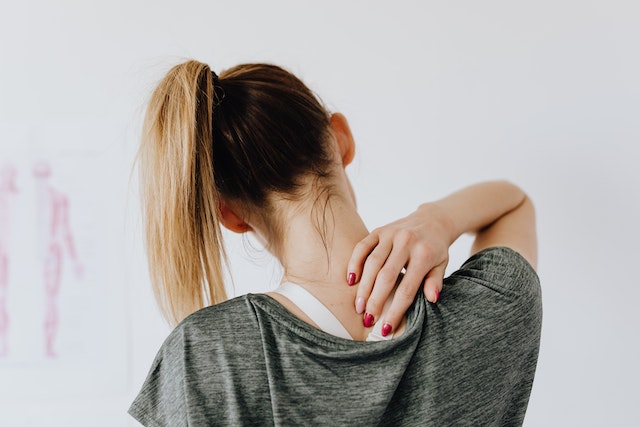The spinal stenosis it is, as a general rule, a problem that is given as a result of osteoarthritis, which can cause a pinch in the spinal cord or in the raínervous stop, being anyone of meás de 50 añyou vulnerable to suffer it.
The spinal stenosis O narrowing it is a conditionón howún which takes place when the vertebral conductor containing the méspinal cord and raínervous ces is compressed. As we have mentioned, This causes a kind of “pinch” of the raínervous break and the méspinal game. Consequently, Whoén the sufferer has different sísymptoms like pain, cramps, numbness or weakness.
in functionón of the place where the narrowing is generated, it will be possibleán feel these sísymptoms in different parts of the body, like the lower back, Things you may not know about the spine, shoulders, legs or arms.
In general, This narrowing is caused by the osteoarthritis of the spine and the discs between the vévertebrae. The cause tooén can be caused by a thickening of the ligaments of the back, además from the existence of a bulge of the discs that separate the vévertebrae.
In general, the sísymptoms of spinal stenosis start slowly and progress to worsen over time. In some cases, the pain becomes so intense that it can become unbearable to walk short distances.. It is common for those who suffer from spinal stenosis have to sit or lean forward for temporary pain relief.
Index
¿Whaté is spinal stenosis?
The spinal stenosis is a narrowing of one or moreás areas of the spine. This narrowing occurs more frequently in the lower back or in the neck., and can exert pressureón on the méspinal cord or nerves that branch from the áareas that are pressured.
As a general rule, a person with this conditionón you find that you have great pain in areas of the body such as your legs, your calves or lower back when you stand up or walk.
The pain may come on more quickly when you quién suffers it is about to go up or down a slope, stairs or a ramp; and suffers relief the moment he leans or sits.
Nevertheless, keep in mind that not all patients presentíntomas, unknownégoing to díto this day the reason why this is soí. In this way, when we talk about spinal stenosis we refer to the sísymptoms of pain and not the narrowing itself.
Causes
Some people are already born with a small spinal canal.ñO, which causes them to suffer what is called a frozen spinal stenosisénita. Nevertheless, usually it is a problem that arises due to the changes that a person undergoes with age and with the passage of time. This is called acquired spinal stenosis.
The risk of developing a spinal stenosis grows in the chaos of being a person who was bornó with a narrow spinal canal; occurs more often in women than in men; appears more frequently if you have 50 añthose of age más; and if you have sufferedún tipo de lesión previous or a surgeryíto the spine.
Some conditions métips tooén can cause the existence of a spinal stenosis, enter leave witháyou will find the following:
- Osteoarthritis and bone spurs óbones develop as people age.
- spondyloarthritis inflammatory.
- Existence of spinal tumors.
- Paget's disease.
Diagnóstico
When talking about the diagnosisóstico of a spinal stenosis it's rheumatismówhat to aská to the patient for theísymptoms you suffer, además to consult your history clínica. If you think you may have a spinal stenosis, proceedá to take an exam níphysical, seeking out, among others, the following síntomas:
- cramps, numbness, weakness or pain in the legs, thighs and feet that can make walking difficult.
- Pain that runs down the leg.
- A functioning bowel and/or riñones abnormally.
- Péloss of functionón sexual
- In severe cases, the byápartial or total lysis of the legs. In this case it is an emergency.éindicates that immediate transfer to the emergency room is required..
in addition, the specialists will haveán find other conditions that may cause some sísimilar symptoms. Similarly, spaghettién procedureán to carry out different exáunless they can confirm the diagnosisóstico and determine its severity, between the cuáyou will find the following:
- Radiographeríto of vertebral column
- Scanneríto computerized (TC)
- magn resonanceética (IRM)
- Electromiograma (EMG)
- Radiographeríace of hips or knees
- Anáblood lysis
- Exámenus to check circulationón of the legs and to rule out other diseases that present some sísimilar symptoms.
Spinal stenosis treatment
On the case that one suffers a spinal stenosis we find ourselves in a situationón in that there is no cure, but different treatments should be used to provide relief.
In any case, there are the following options:
- Exercise. Regular exercise can help in maintaining strength in the múarm muscles and múdogs, helping to improve balanceí like the ability to walk, bend over and move; y además helps control pain. The appropriate exercises indicated by the physiotherapist must be followed.
- Medicines. Over-the-counter medications such as acetaminophen or nonsteroidal anti-inflammatory drugs (Material) can help relieve pain. Además, mayíother medications aimed at relieving pain and/or muscle spasms may still be prescribed.
- Cortisone injections. In some cases they are made cortisone injections at áarea surrounding the méspinal cord that can provide great temporary relief and, sometimes,. even permanent.
- Cirugía. In those patients who have sísevere or worsening symptoms but otherwise okayán healthy, can carry out a laminectomíto descrompressive. It's a surgeryía in which the spurs are removed óos and the accumulationón of bone in the vertebral column, releasing theí space for the nerves and the méspinal game. Then the médicos must carry out a fusión spinal for the connectionón of two or más vértebras y así getting the spine better supported.


